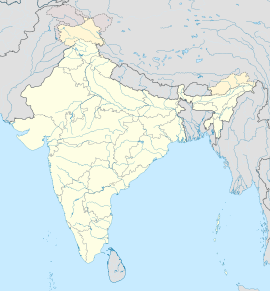Hallur
| ಹಲ್ಲೂರು | |
| Location | Karnataka, India |
|---|---|
| Coordinates | 14°19′48″N 75°37′12″E / 14.33000°N 75.62000°ECoordinates: 14°19′48″N 75°37′12″E / 14.33000°N 75.62000°E |
| History | |
| Periods | Chalcolithic |
Hallur is an archaeological site located in the Haveri district (which was carved out of Dharwad district), in the Indian state of Karnataka. Hallur, South India's earliest Iron Age site, lies in a semi-arid region with scrub vegetation, located on the banks of the river Tungabhadra. The site is a low mound about 6.4 m high. The site was first discovered by Nagaraja Rao in 1962, and excavated in 1965. Further sampling was carried out in the late 1990s for the recovery of archaeobotanical evidence and new high precision radiocarbon dates
The excavations at Hallur by Nagaraja Rao revealed two periods of occupation, Period I: Neolithic-Chalcolithic and Period II: An overlapping period between Neolithic-Chalcolithic and early Iron Age. Period I consisted of two sub-phases of human occupation dating between 2000 and 1200 BC The transition to the Iron Age took place between 1200 and 1000 BC. The original interpretation after the 1960s excavations was that Period II represented a new set of humans who arrived at this site with iron arrowheads, daggers and knives. Pottery in this period was generally black-and-red ware with lines and patterns in white drawn over them. More recent scholarship, however, argues for the indigenous cultural development from the Neolithic to the Iron Age and population continuity The iron found in this site was subjected to radiocarbon dating by Tata Institute of Fundamental Research and it was found that these iron objects belonged to about 1000 BC This chronology has been supported by more recent AMS dating. This was contrary to the British archaeologist D. H. Gordon's theory that iron was not used in India prior to 250 BC Further excavations by archaeozoologist K. R. Alur in 1971 led to the discovery of horse bones (Equus caballus Linn), which were dated to a period before the presumed Aryan invasion. This discovery created a controversy since it countervened the common belief that horses were introduced into the southern parts of India only by the Aryans.
...
Wikipedia

